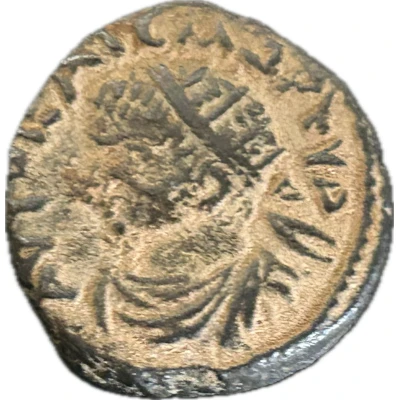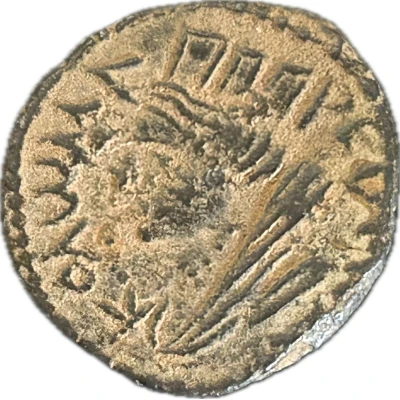


© LucasDallaSFranck (CC BY-SA)
Æ17 - Elagabalus Π EΔECCA
| Bronze | 3.18 g | 16 mm |
| Issuer | Edessa (Mesopotamia) |
|---|---|
| Emperor | Elagabalus (Sextus Varius Avitus Basianus) (218-222) |
| Type | Standard circulation coin |
| Years | 218-222 |
| Currency | Antoninianus, Reform of Caracalla (AD 215 – 301) |
| Composition | Bronze |
| Weight | 3.18 g |
| Diameter | 16 mm |
| Shape | Round (irregular) |
| Technique | Hammered |
| Orientation | Variable alignment ↺ |
| Demonetized | Yes |
| Updated | 2024-10-06 |
| Numista | N#413752 |
|---|---|
| Rarity index | 92% |
Reverse
Turreted, veiled, and draped bust of Tyche left.
Script: Greek
Lettering: Π EΔECCA
Translation: "Edessa" city.
Interesting fact
The coin , the Æ17 - Elagabalus (Π EΔECCA) (218-222) from Edessa (Mesopotamia), is a rare example of a Roman coin that was issued during the reign of Elagabalus, who was the emperor of the Roman Empire from 218 to 222 AD. This coin is particularly interesting because it was minted in Edessa, which is now modern-day Turkey, and it features an image of Elagabalus on one side and the goddess Athena on the other. The coin's design and inscriptions reflect the cultural and religious influences of the time, and it provides a unique glimpse into the economic and political systems of the Roman Empire during this period.